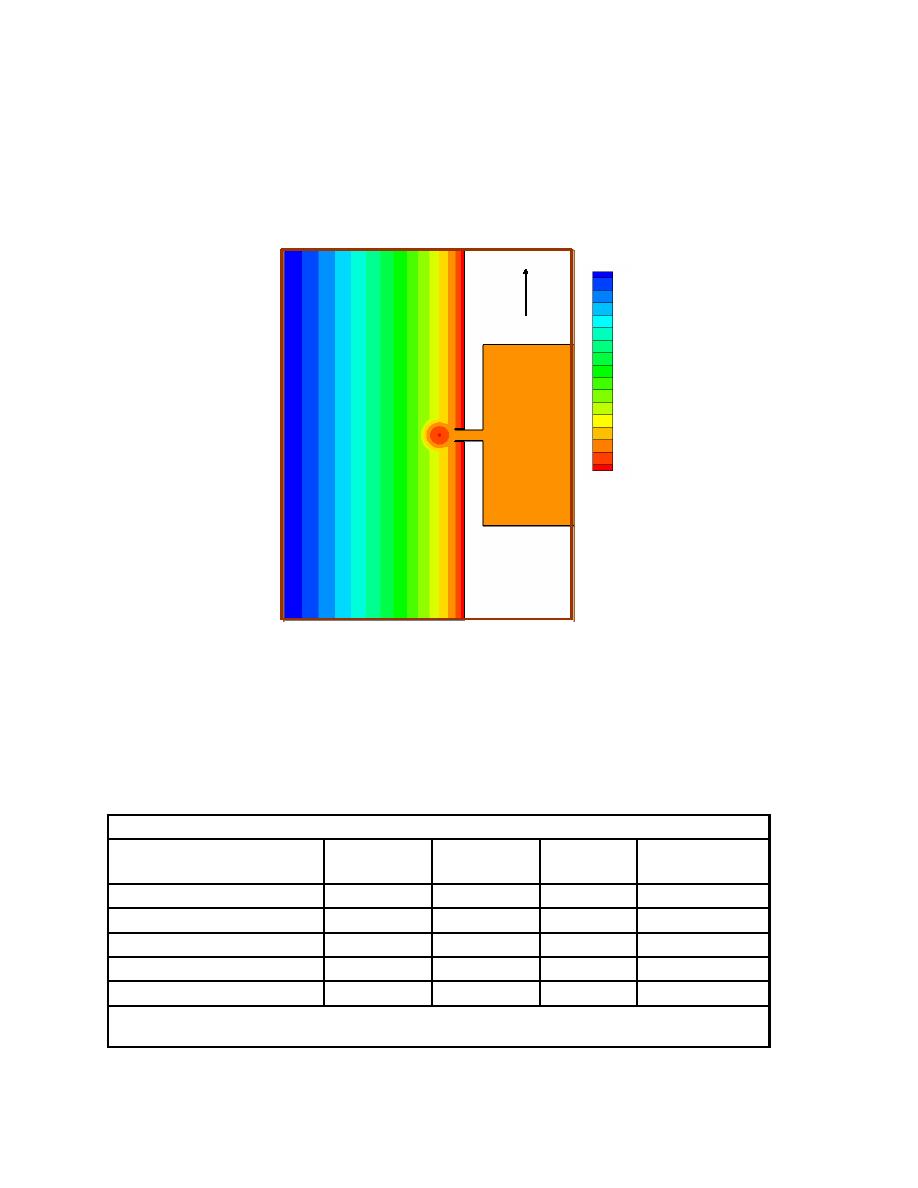
clockwise from Shinnecock Inlet.) Dual parallel jetties extend 250 m seaward from the
shoreline. Calculation cells were specified to be 25 m on each side for the wave model giving
fine resolution for the breaking waves. Cell side lengths varied between 25 and 50 m for the
circulation model, with finer resolution near the shore and through the inlet. The Manning
roughness coefficient, specified in the circulation model, varied between 0.028 m/s1/3 in the
offshore region to 0.04 m/s1/3 in the inlet and surf zone.
Depth, m
Depth,
30
N
28
26
24
22
20
18
16
14
12
10
8
6
4
2
0
Fig. 1. Idealized grid bathymetry
Five simulations were conducted in which combinations of tide and wave forcing were
applied (Table 1). For the case of tide forcing only, no coupling with the wave model was
conducted. For the cases with wave forcing only, 1-way coupling was conducted in which
radiation stress gradients were transferred from the wave model to the circulation model and
were held constant throughout the simulation. For cases with both wave and tide forcing, 2-way
coupling was invoked at 3-hr steering intervals.
Table 1. Simulation Properties
Case Number &
Tide
Wave
Wave
Wave
Height*, m
Period*, s
Direction*, deg
Description
Range, m
1. Tide only
1.0
0.0
0
0
2. Fair-weather wave only
0.0
1.0
8
30
3. Storm wave only
0.0
3.0
10
30
4. Tide & fair-weather wave
1.0
1.0
8
30
5. Tide & storm wave
1.0
3.0
10
30
* Wave properties refer to the significant wave height and peak spectral period specified in 30 m
of water at the seaward STWAVE boundary..
Militello and Kraus
3



 Previous Page
Previous Page
